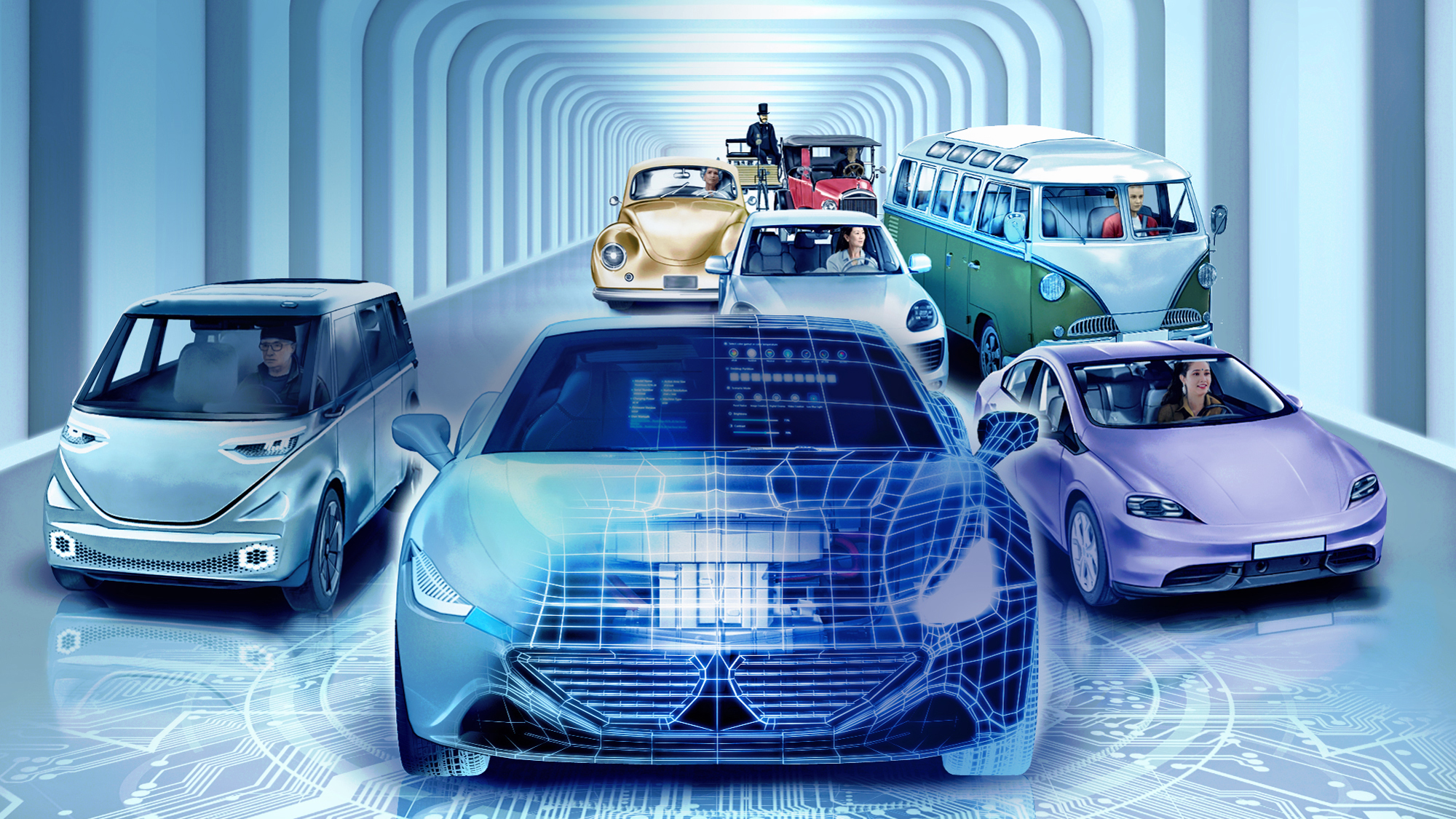Software, Chips, and
Batteries
Dr. Hagen Radowski, Senior Partner at the management consultancy Porsche Consulting, explains why software must come first in the electric car of the future. He is convinced that closer collaboration between carmakers and the semiconductor industry promises better end products.
12/2023

Let’s take the year 1886 and Carl Benz, who invented the first internal combustion engine for the car. Or the year 1912, when Henry Ford introduced assembly-line production in automotive engineering. Whichever date we start from, more than 100 years have passed since then. Now, for the first time worldwide, new players have entered the stage and discarded the time-tested traditional approach of first designing a car, then adding electronic components, and finally developing software intended to unite these very different components under one user interface. As a result, the automotive industry is facing what is probably the greatest upheaval in its history.
Today’s modern all-electric vehicle is equipped with a multitude of electronic control units. The functions of these devices range from unlocking the doors to autonomous driving. And the electronic components come from a wide variety of suppliers. It is not only becoming increasingly difficult to combine all these devices into a single software platform, but also to update this platform at appropriate intervals with reasonable amounts of data. It will not be enough to accompany this process with a technical evolutionary approach.
In searching for a term that best describes what truly needs to happen, a book written 61 years ago by the eminent philosopher and historian of science Thomas Kuhn helps. The title is rather dry: The Structure of Scientific Revolutions. In it, Kuhn coined the term that so aptly and accurately describes how the “old automotive industry” must now act in order to survive.
The term is “paradigm shift.” According to Kuhn’s definition, a new paradigm can prompt new but relevant questions about old data. In a paradigm shift, you are not only “solving puzzles” using the previous paradigm, but also changing the rules of the game and the “work plan” for arriving at new solutions. To explain the basics of the paradigm shift, Kuhn had his audience gaze at a duck for 10 seconds …
… and then said: “’This is not a duck, this is a rabbit sideways.’ From that moment on, no one saw the duck anymore; everyone saw the rabbit. Looking at the same thing with a fresh new perspective.” In the context of the automotive industry, this means that it has to approach things differently.
Code is the new clearance
Manufacturers need to move away from first designing the car with perfect clearance, i.e., an even distance between the panels on the outside of the vehicle, then adding a seemingly endless number of control units, and then trying to write the right software. Instead, software development must come first. Or in other words, “flawless code is the new clearance.” This new approach for the automotive industry has a name: the software-defined vehicle, or SDV.
Why is all this necessary? Many of the new players have proved that a software-centric approach makes it easier to separate the software — which normally develops more quickly — from the hardware, which advances at a slower pace. At the same time, this increases flexibility in terms of hardware replacement. The new rules for the SDV paradigm, according to Thomas Kuhn, are therefore: Explain the principles. Add to this the user experience and the ability to use a solution immediately.
A great example to illustrate the impact of user experience comes from Tesla, whose customers frequently complained that they couldn’t leave their dogs in the car when they went shopping because it got too hot in the car; or people came up to the owners and berated them for leaving their dog in an overheated car. So Tesla introduced DOG mode. When this mode is activated, the windows are rolled down so that the dog can get some air, and the following message appears: “I’m fine. My owner is out shopping and will be back soon.”
But software always runs on hardware. This is where the semiconductor industry comes into play. Just as for writing good car software, proven processes are used for hardware and chip architecture as well. Experts call this the electrical and electronic architecture, or E/E architecture for short. It is the software-based E/E architecture that makes the software-defined vehicle possible in the first place.
The most important prerequisites for software-defined vehicles are created in the semiconductor industry. Several thousand chips are used in a modern battery-powered vehicle. If we compare this with the 60 or so highly individualized chips in an Apple iPhone, we can see that we are still a long way off. It may be possible to reduce the number of control units to around a fifth, but with a higher proportion of customized chips. But why go to all this effort? Because digitalization and electrification will continue to drive the demand for chips in cars. The automotive industry is the sector for which the semiconductor industry needs to grow the most quickly in the years to come. And carmakers need more direct partnerships with the semiconductor industry to manage this growth.
Direct partnerships with the semiconductor industry
An apt example comes from the mobile communications industry: By working particularly closely with the semiconductor industry and marketing directly, phone manufacturers were able to move from a “standardized” approach along the lines of Nokia to what we see today in modern Apple iPhones: greater speed and flexibility in the development process, cost savings that should not be underestimated, and the ability to translate available chip technology into features that consumers are willing to pay for. These are a few of the benefits that come from a direct partnership between the semiconductor and automotive industries. But there are differences as well. Above all, the automotive industry needs chips that are “car-proof” under very exacting conditions. This means creating transparency and making strategic investments in technologies that the market demands.
All car manufacturers will need to put in considerable effort to prepare for and embrace this paradigm shift. For this reason, Porsche Consulting has developed the Strategic Semiconductor Management Framework. This model helps companies to gain comprehensive semiconductor know-how and at the same time to visualize the impact of semiconductor procurement. This, in turn, helps in developing a long-term strategy for semiconductors. Moreover, it facilitates the exchange with the semiconductor industry by agreeing on a language that both sides understand. This model applies to many different sectors, as a semiconductor strategy is not only urgently needed in the automotive industry. However, it is the automotive industry that is facing the greatest challenges.
The time is now for the automotive and semiconductor industries to work even more closely together. For the automotive industry, three factors will determine whether it is competitive: software, chips, and batteries. Car manufacturers want to lead in these three areas. This does not mean that they want to produce only their own chips. However, they must collaborate with the semiconductor industry in a manner that leads to a better end product.

